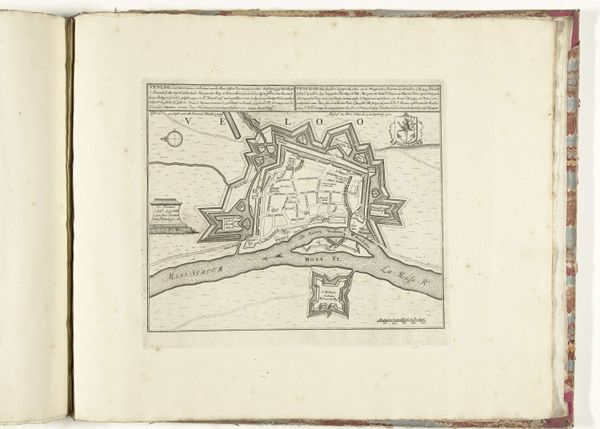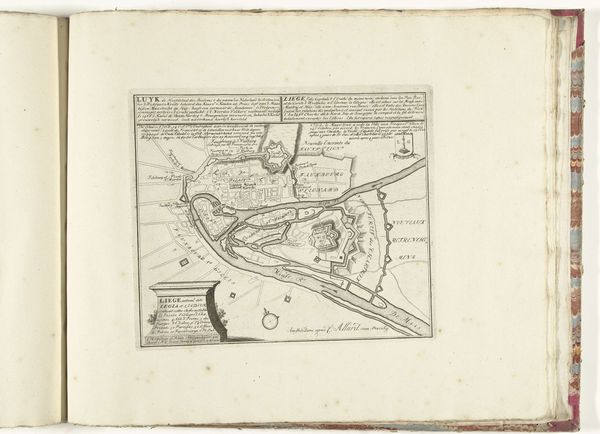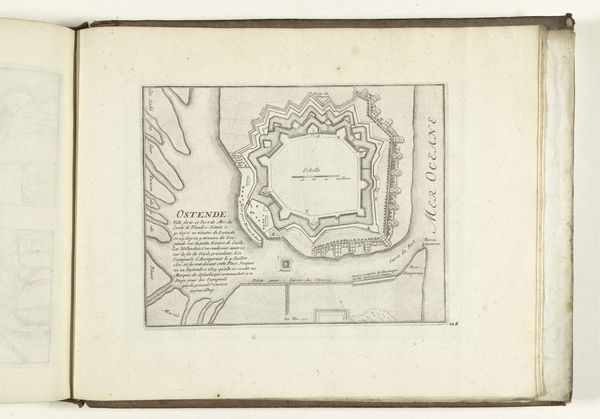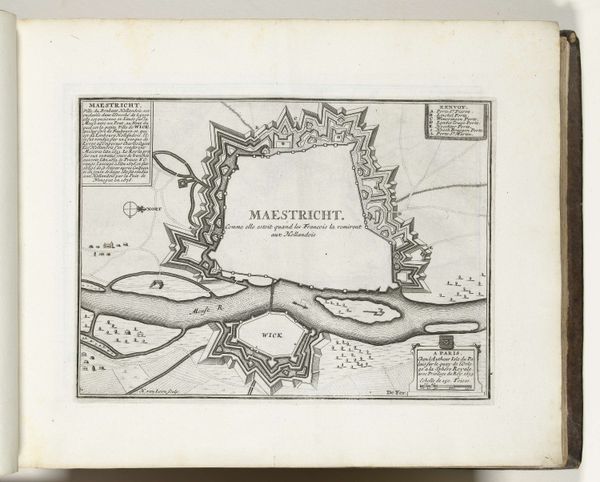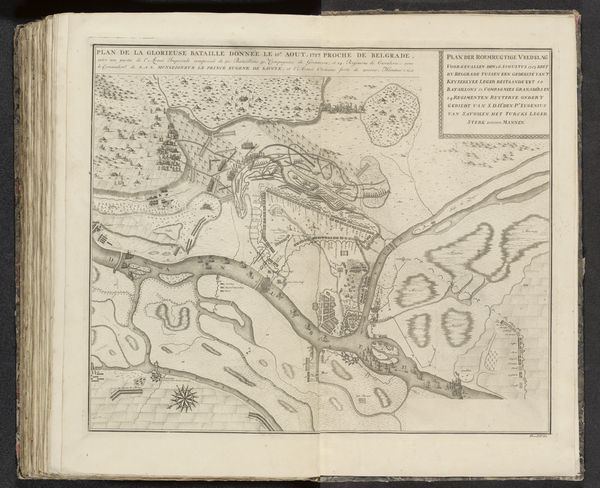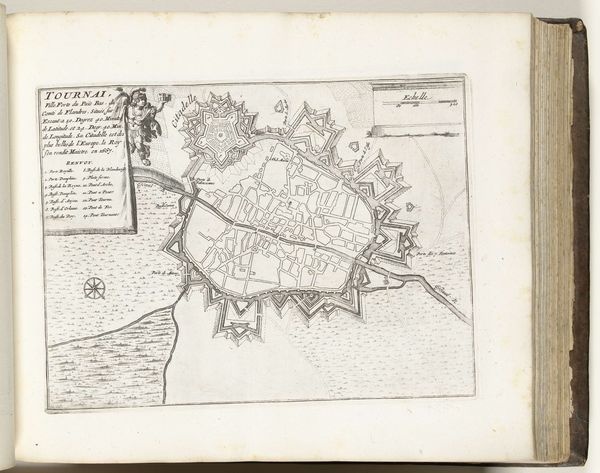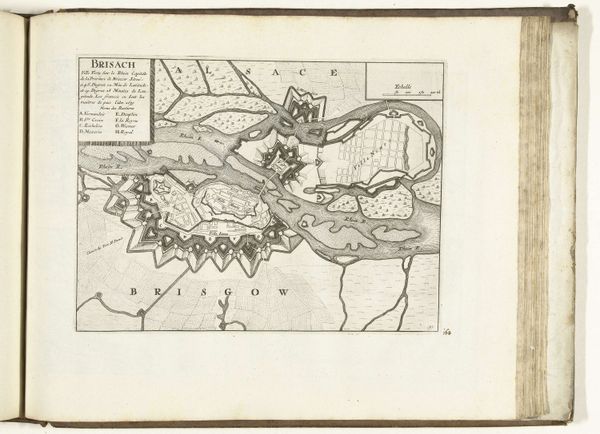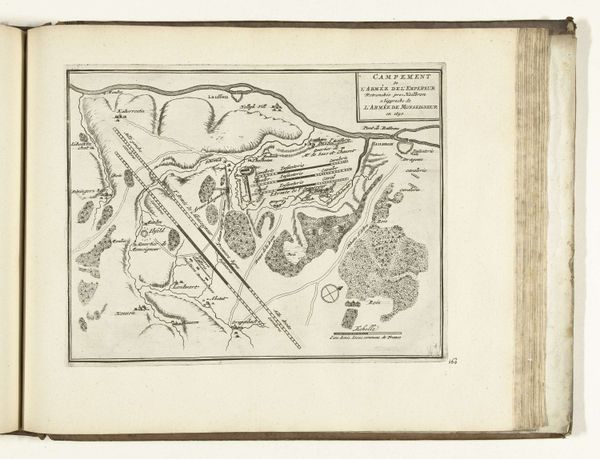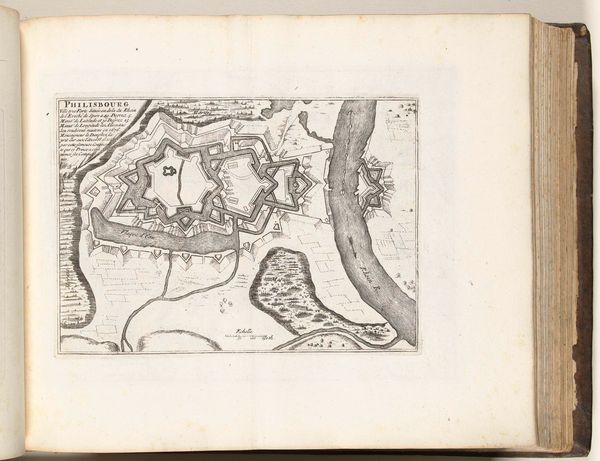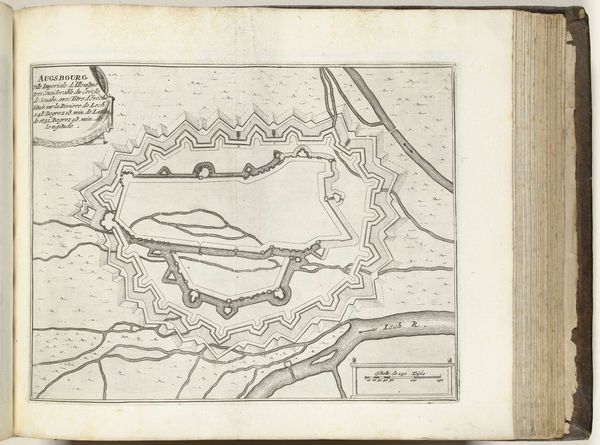
print, engraving
#
medieval
# print
#
old engraving style
#
geometric
#
cityscape
#
history-painting
#
engraving
Dimensions: height 200 mm, width 278 mm
Copyright: Rijks Museum: Open Domain
Curator: Before us, we have a print from 1726 titled "Plattegrond van Maastricht." Editor: It’s amazing! An old map with such detail— the city seems almost under siege with all those star-shaped fortifications. Curator: Indeed. Its a depiction of the city of Maastricht. And let’s note that the Rijksmuseum holds this piece, speaking to its historical importance and how its circulation and preservation is shaped by institutions. Editor: It certainly conveys the materiality of siege warfare. What intrigues me is that such prints are a production; distributed on mass, each piece contributes to political discourses on militarization. Curator: Precisely! You can see how cartography, which was used for military intelligence as much as navigation, helped define boundaries but also legitimized state control, especially during times of conflict. This image would have been both informational and served as propaganda for viewers across Europe. Editor: The star-shaped forts—are a brilliant example of adapting to technological advances. They’re clearly responding to siege cannon! Think about the physical labor involved in building such defenses... all that moved earth, reshaped into angular bulwarks of human, and in a sense, industrial effort. Curator: These shapes themselves are intriguing too as they have a lasting impact. Fortification designs are not accidental and such engineering feats were a visible representation of the ruling power's authority. How the labor is coordinated for warfare also shaped political powers... Editor: Absolutely. So, it is both a depiction of geography but also a document showing how defense impacted urban form, even our physical experiences in it. Thanks for drawing attention to the labor behind it, unseen in traditional readings. Curator: My pleasure. Thinking through the historical and institutional framing alongside its production adds a richer understanding to the work’s place in our present.
Comments
No comments
Be the first to comment and join the conversation on the ultimate creative platform.
